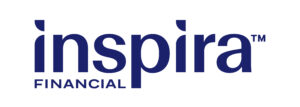Health Savings Account (HSA)
McClatchy offers HSAs to eligible employees enrolled in the Saving Advantage medical plan. HSAs allow you to save pre-tax dollars to help pay out-of-pocket medical expenses – now and in retirement!


An HSA lets you take more control of your health by allowing maximum tax savings for medically-related expenses. You're not taxed on contributions, reimbursements (when used on eligible expenses), or investing your HSA to grow your savings (when reaching the minimum balance required).
Plan Information
The amount that you can contribute to an HSA each year is based on a number of factors. These include your level of coverage (Employee only, Employee + Sp/DP/Ch, Family); how long you had the HDHP; and your age.
The contribution schedule below can help you determine when you'll receive the employer contribution and the amounts.
The contribution limit below will help you determine the maximum you're able to put into your HSA while factoring in the employer contribution.
Discover the real power of having an HSA.
How can you lower your taxable income with an HSA?
Contributions to your HSA are tax-deductible, and the funds are tax-free when used for qualified medical expenses. For example, if you contribute $2,000 annually to your HSA and your base salary is $30,000- you will only be taxed on $28,000 come tax season.
At retirement age, the money in the account is yours for medical or nonmedical expenses (when used for nonmedical expenses, it's considered taxable income). Learn more about retiring with your HSA here.
HSA's 101
Eligible for an HSA:
- Employees enrolled in our Savings Advantage or Value Choice plan, a high deductible health plan (HDHP).
Not eligible for an HSA:
- Employees not enrolled in the Savings Advantage or Value Choice plan;
- Employees with a spouse who has a health care Flexible Spending Account (FSA) or Health Reimbursement Account (HRA) in the same year;
- Employees enrolled in Medicare, Medicaid or Tricare;
- Employees claimed as someone else's tax dependent;
- Employees who fail to complete the HSA Customer Identification Program (applicable only if requested).
Employees can make contributions to an HSA on a pre-tax basis through payroll deductions only if they are enrolled the Savings Advantage or Value Choice plan.
For the 2026 plan year, McClatchy will make contributions to an active employee’s HSA account to assist with cash flow for expenses. The contribution ranges from $500- $1,000 per year depending on coverage levels.
However, in future years, company contribution to HSA accounts may be tied to the wellness program and employees may have to earn the contributions.
To process a HSA Change, you'll need to visit the Benefits area in UKG. In this instance, you'll want to choose Health Savings Account Change as the type of event. Additional resources for navigating the new Benefits platform can be found here. If you have any additional questions, please don't hesitate to contact our LiveWell team at livewell@mcclatchy.com.
As often as you like- there is no limit as to how often you may change your deductions. The change you make will replace any previous deduction elections and will remain in effect unless another change is made.
No, if you don’t use the funds, they remain in your HSA and roll over to the next year. You can take unused balances with you if you switch medical plans, retire or leave the company.
- Pre-tax or tax-deductible savings – your contributions into your HSA are generally tax-deductible.
- Tax-free interest and investment earnings – your account balance can grow tax-free!
- Tax-free distributions – the money you take from your HSA account to pay for qualified medical
expenses is not taxed.
Each year the IRS sets HSA contribution limits. These limits are the maximum contributions that can be made to your HSA for the year, including both employee and any company contributions. Additionally, if you are age 55 or older by the end of the year, you may contribute an additional $1,000 to your HSA as a “catch-up” contribution.
For 2025 limits, visit the 2026 HSA Contribution Limits page.
Generally, in order to be eligible for an HSA, you can’t have any medical coverage other than the HDHP.
This means you can’t be covered by another medical plan, including Medicare and Tricare, a health flexible spending account (FSA) or health reimbursement arrangement (HRA). If you or your spouse are enrolled in a health FSA or HRA, you are not eligible to contribute to an HSA.
The individual who owns that HSA is required to maintain a record of expenses to demonstrate that the funds are being used for qualified medical expenses in the event of an IRS audit.
You are the owner of your HSA and you may continue to maintain the account if you leave McClatchy. All contributions - including the company contribution-are yours to keep. However, any account maintenance fees are your responsibility after leaving McClatchy.
If you are enrolled in Medicare or Medicaid, you’re not eligible to contribute to an HSA. If you had an HSA when you enrolled in Medicare or Medicaid you can still use the funds towards eligible expenses.
Note: If you are ineligible to contribute to the HSA, you are also not eligible for the companies HSA contribution.
Since HSAs are bank accounts, Inspira Financial is required to verify your identity before opening an account by confirming your full name, address, birth date, and Social Security number with the federal government. This verification is required under Section 326 of the USA PATRIOT Act.
Generally, employees do not need to submit additional information to Inspira Financial.
If Inspira Financial is not able to confirm your information with the federal government they will send you a letter within three business days explaining the CIP issue and request the documentation needed to confirm your identity or address.
- If you don’t respond within 30 days, Inspira Financial will send you a second letter.
- If you don’t respond within 30 days of your second letter, Inspira Financial will send you a third
and final letter.
Here is more information regarding the process.
Your HSA account set-up will stay pending until you complete the CIP process. Any company HSA contributions processed while your account is pending will be forfeited.
Any employee contributions made during this time will be returned to the employee and future contributions will be stopped. The employee contribution to the HSA will be reversed and returned to the employee as taxable income and ongoing employee contributions updated in Employee Self Service (ESS) to $0.
Using my HSA FAQ
Eligible expenses are defined by the IRS. The general rule for medical expenses is that the expense has to be for medically necessary purposes only. Cosmetic or optional expenses are not eligible. You may also use your HSA for long-term care premiums, COBRA premiums, retiree medical premiums, and Medicare premiums (but not for Medicare Supplement plans).
Check if your expense is eligible for reimbursement with an interactive table here.
Yes. However, if funds are withdrawn for expenses that are not qualified medical expenses, the IRS will impose a 20% penalty tax. After the age of 65, the funds can be withdrawn without penalty, but the amount withdrawn will be taxed as ordinary income.
Yes, as long as the expenses incurred is considered a qualifying medical expenses by the IRS.
An HSA operates like a banks account and the funds must be available before you can request reimbursement. If your expense in January is more than what your HSA account balance, you will have to pay the difference between your expense and your HSA, and pay yourself back once you have sufficient funds available in your account.
No, you can only be reimbursed for qualifying health care expenses incurred after your HSA has been started.
- At your first doctors visit-give the receptionist your new insurance card. If you’re officially enrolled in your new plan, but your insurance and/or HSA debit card hasn’t arrived in the mail yet, it might be possible to print off a temporary card and use that. If not, you may need to pay the full amount out of pocket and get reimbursed once you have your card in hand.
- Depending on what kind of care you’re getting, you may or may not have to make a payment while you’re at the doctor’s office.
- If you do need to make a payment for health care before you leave the clinic, expect the price tag upfront to be bigger than it was with your HMO. But don’t freak out about it!
- Pay for your visit in one of two ways.
- If you have an HSA debit card with enough funds on it: Pay with that card and the expense will be subtracted out just like funds from any debit card would be.
- If you don’t have an HSA card yet or have the card but don’t have enough funds on it: Use another payment method (cash, checking, credit card) and then go to www.inspirafinancial.com to reimburse yourself.
- When the Explanation of Benefits form comes in the mail a few days or weeks, don’t mistake it for a new bill. It might look like a bill, but it’s really, truly not a bill. Instead, think of it as an “FYI” sort of document. What’s on that form will, by the way, be reflected in your online account.(For a good basic look at how to read an EOB, go here.
Contacts
- Inspira Information Line: 888-678-8242
- Account balance
- Eligible expenses questions
- Claim status and inquiries
- Inspira Member Website
- Savings Calculator
- Eligible Expense Search
- Claim status and inquiries
Inspira Language Services
Servicios lingüísticos | Lus pab
Dịch vụ ngôn ngữ | 语言服务
888-678-8242
